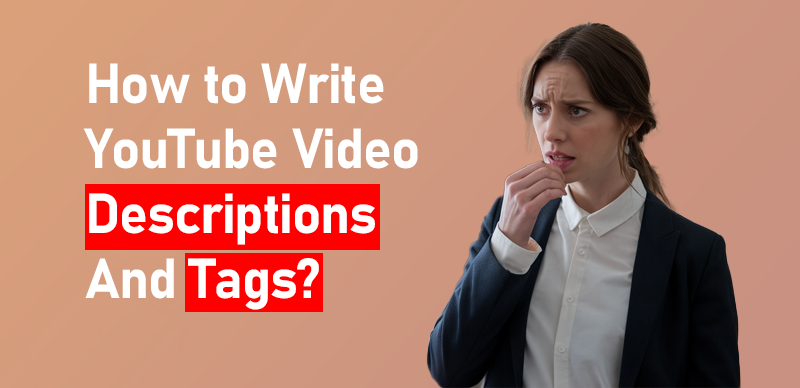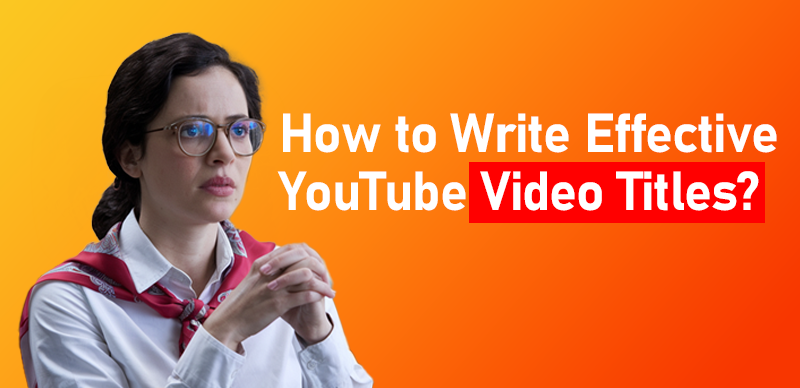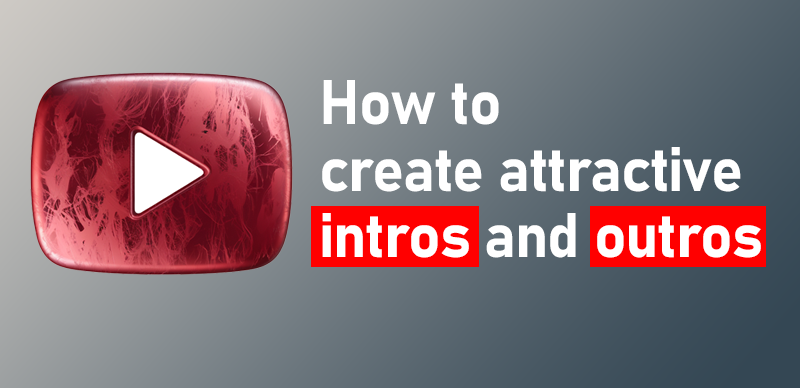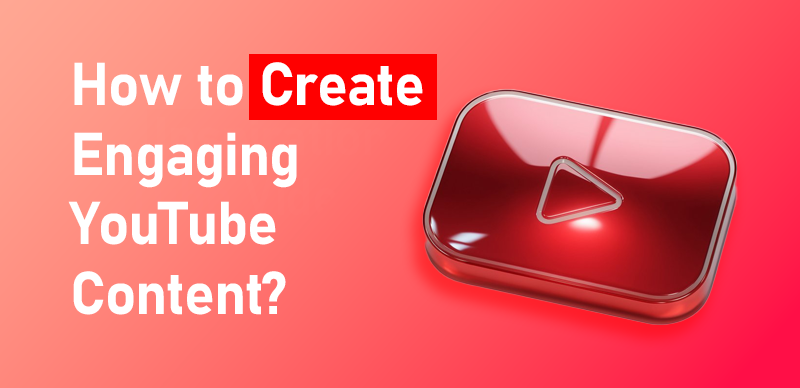
How to write YouTube video descriptions and tags?
Why Descriptions and Tags Matter
The Power of Video Descriptions
Think of a YouTube video description as a warm handshake—a friendly, welcoming invitation for your audience. It sets the tone, provides essential context, and makes it easier for potential viewers to decide whether your video is worth their time. A well-crafted description does more than summarize; it engages, informs, and drives action.
The Role of Tags in Video Discovery
Tags are like digital breadcrumbs that guide viewers to your content. By choosing the right tags, you can help your video appear in search results when someone types in related keywords or phrases. YouTube uses tags to understand what your video is about, and when combined with other SEO strategies, they can significantly improve your video’s visibility.
Together, descriptions and tags are indispensable tools for building your YouTube presence. Let’s break down how to optimize them.
7 Ways to Write the Perfect YouTube Video Description
1. Start Strong with a Hook
The first few lines of your YouTube description are incredibly important—they act like the opening scene of a movie. If you don’t grab attention, viewers may scroll past without giving your video a second thought. Make your opening lines compelling, intriguing, or even slightly mysterious. This hook should encourage viewers to keep reading (or, in this case, watching).
Example:
“Ever wondered how to make your YouTube thumbnails pop and grab attention? In today’s video, I’ll show you simple tricks that make your thumbnails stand out in the crowded YouTube feed!”
- This opening piques curiosity and gives a glimpse into what the viewer will learn. When writing your own hook, think of a question or statement that directly addresses your audience’s pain points or interests.
Start Strong with a Hook
2. Provide a Detailed Overview
Once you’ve got your viewer’s attention, it’s time to outline what your video will cover. Be concise but informative, giving them a roadmap of what to expect. Use short paragraphs or bullet points for easy scanning.
Example:
What You’ll Learn:
- How to choose the perfect colors and fonts for thumbnails
- Tips for using Canva to create stunning designs
- Simple techniques for adding text that pops
By clearly outlining what viewers will gain from the video, you’re helping them make an informed decision on whether to watch all the way through.
3. Sprinkle in Relevant Keywords
Keywords are the lifeblood of searchability on YouTube. By integrating them naturally into your description, you increase the chances of your video appearing in relevant search results. However, avoid keyword stuffing—Google and YouTube’s algorithms value quality and readability.
Example:
“In this tutorial on thumbnail design, we’ll explore using tools like Canva and Adobe Spark to create eye-catching thumbnails that boost engagement.”
Notice how the keywords “thumbnail design,” “Canva,” and “Adobe Spark” are seamlessly integrated into the description. These are terms potential viewers might type when searching for videos related to thumbnail creation.
4. Include Calls to Action
You want your viewers to take action after watching your video—whether it’s subscribing to your channel, liking the video, or leaving a comment. Including a clear call to action (CTA) in your description can make a significant difference.
Example:
“If you found this guide useful, hit the like button and subscribe for more tips on creating amazing content. Don’t forget to leave a comment with any questions or suggestions!”
- Encouraging interaction increases your chances of building a loyal audience, which in turn boosts engagement metrics like likes, shares, and comments.

Include Calls to Action
5. Add Timestamps for Easy Navigation
Long videos can sometimes overwhelm viewers, but with timestamps, you can enhance the user experience by allowing them to skip to the sections that interest them the most. Timestamps are especially useful for tutorials, Q&A videos, or reviews.
Example:
“00:00 Introduction
01:30 Choosing Colors
04:00 Using Canva
07:00 Adding Text”
Timestamps provide easy navigation, improving the overall user experience and encouraging viewers to watch for longer periods.
6. Provide Additional Resources
If you have related content—whether it’s another YouTube video, a blog post, or even a free downloadable resource—include those links in your description. It not only helps keep your audience engaged, but it also gives them a clear path for further learning.
Example:
“For more design tips, check out our blog here: [Your Blog Link].”
This is an excellent way to guide viewers to other content that complements the video, boosting watch time across your entire channel.
7. Use Hashtags Wisely
Hashtags are a great way to improve discoverability. You can add relevant hashtags at the end of your video description to help categorize your video and increase its chances of showing up in search results for specific topics.
Example:
- #ThumbnailDesign #YouTubeTips #ContentCreation
5 Tips to Optimize YouTube Video Tags
1. Choose Tags That Fit
Tags give YouTube more context about your video’s content, helping it rank better for specific keywords. They should be a mix of broad and specific terms that describe your video accurately.
Example:
For a video on creating YouTube thumbnails, relevant tags could be “YouTube thumbnails,” “thumbnail design,” and “video marketing tips.”
2. Use Keywords Strategically
Your tags should complement your video description and align with the keywords potential viewers might search for. Try to use a mix of broad tags and more specific ones to capture different search intents.
Example:
“Thumbnail design tutorial,” “Canva tutorial,” and “Best thumbnail design tools.”
3. Avoid Tag Overload
While tags are essential, don’t go overboard. It’s better to focus on a handful of quality, relevant tags than to use a long list of generic ones. Too many irrelevant tags can confuse YouTube’s algorithm and dilute the relevance of your content.
4. Analyze Competitor Tags
If you’re in a competitive niche, reviewing the tags of successful videos can give you insight into what works. Competitor research can also inspire you to include tags you may not have thought of, improving your chances of being discovered.

Analyze Competitor Tags
5. Update Your Tags Regularly
Audience preferences and search trends change over time. Keep your tags updated based on video performance and emerging trends. Regularly refining your tags ensures that your content remains relevant and discoverable.
Putting It All Together
Creating an engaging YouTube video description and selecting the right tags is not just about writing a few sentences or adding random keywords. It’s a strategic approach that involves crafting a compelling narrative for your audience while boosting visibility in search results.
Here’s a quick recap of the key points to keep in mind:
- Start with a hook that grabs attention.
- Provide a detailed overview of what your video covers.
- Sprinkle in relevant keywords naturally.
- Encourage engagement with clear calls to action.
- Include timestamps to improve navigation for longer videos.
- Link to additional resources to keep your viewers engaged.
- Use hashtags wisely to improve discoverability.
By following these practical tips, you’ll not only improve your video’s search ranking but also enhance the overall viewer experience.




